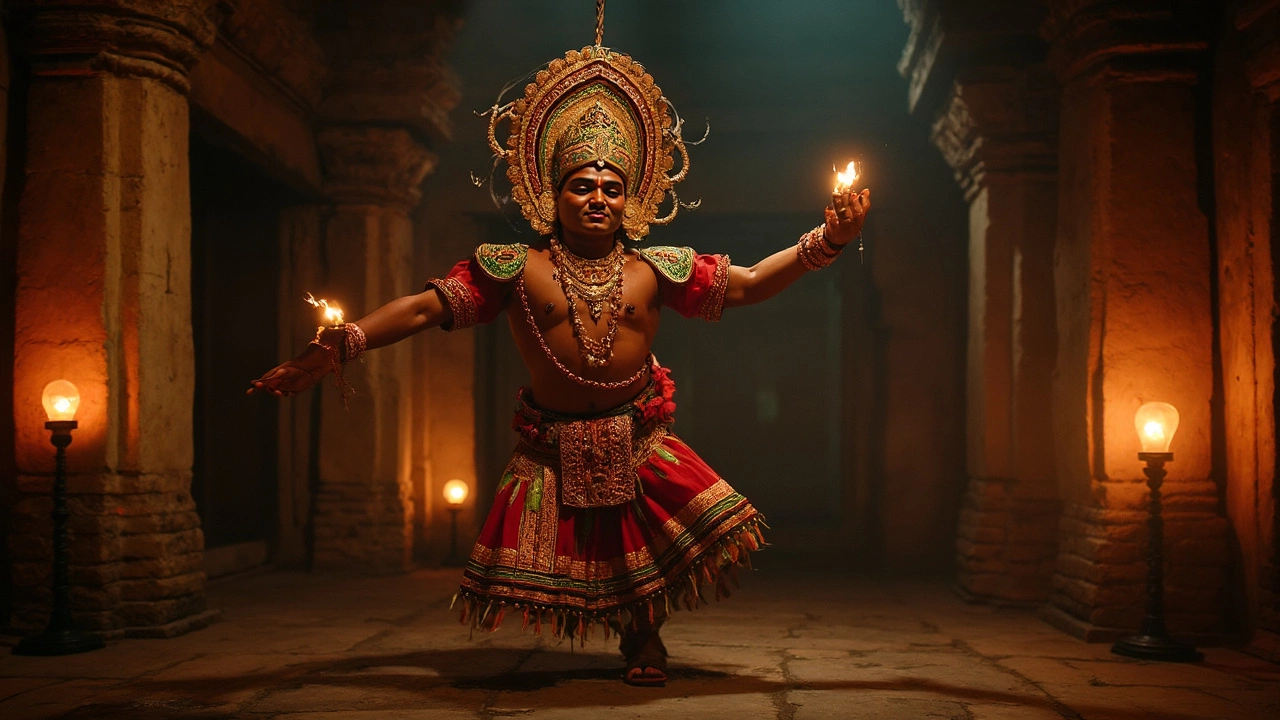Regional Dance Forms of Tamil Nadu: Traditional Moves, Rituals, and Cultural Roots
When you think of regional dance forms, distinctive movement traditions tied to specific places, communities, and rituals. Also known as folk dances, they’re not just performances—they’re living history. In Tamil Nadu, these dances aren’t staged for tourists. They’re woven into temple rituals, harvest celebrations, and village festivals, passed down through generations without written manuals. You won’t find them in ballet schools or competition halls. You’ll find them under neem trees, outside village shrines, and during monsoon processions where the drumbeats echo louder than traffic.
Take Karakattam, a devotional dance where performers balance clay pots on their heads while moving to rhythmic drum patterns. It started as an offering to the rain goddess Mariamman. Dancers don’t just move—they pray with their bodies. Then there’s Theru Koothu, a street theater-dance hybrid with bold makeup, exaggerated gestures, and stories drawn from the Mahabharata. It’s performed on open ground, often all night, with no stage, no lights, just fire torches and a crowd that knows every line. And Puliyattam, the tiger dance, where dancers paint their bodies yellow and black, move like predators, and embody the spirit of nature. These aren’t costumes. They’re transformations.
These dances don’t exist in a vacuum. They connect to Tamil folklore, temple architecture, and even the way people speak. The footwork in Karakattam mirrors the cadence of Tamil folk poetry. The drums used in Theru Koothu are carved from the same wood as village temple doors. And the stories told? They’re the same ones grandmothers whisper at bedtime. You won’t find these dances in textbooks. You’ll find them in the sweat of a dancer at 5 a.m., the dust kicked up by bare feet, the laughter after a misstep that turns into a chant.
What makes these forms survive? Not fame. Not money. Not TV shows. They live because they still serve a purpose—to ask for rain, to ward off evil, to celebrate a harvest, to remember who you are. In a world that’s always chasing the next trend, these dances are quiet rebels. They don’t need to go viral. They just need to be danced.
Below, you’ll find real stories from people who’ve learned these dances, watched them change over decades, and fought to keep them alive. Some are about forgotten steps being rediscovered. Others are about kids in Chennai learning Puliyattam not because it’s cool, but because their grandfather danced it. This isn’t a museum exhibit. It’s a living tradition—and you’re about to see how it still breathes.

